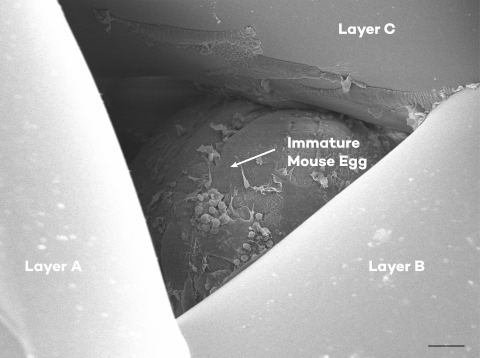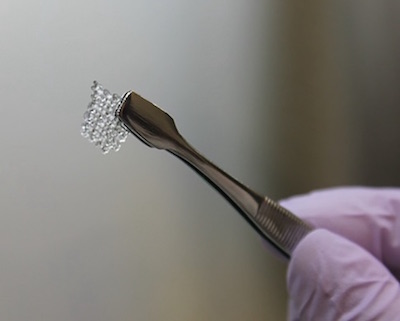While more and more people are living well beyond their cancer diagnoses, the effects of cancer treatments can have lasting effects on their overall quality of life. For example, many chemotherapy drugs as well as radiation therapy, can severely harm women's ovarian health, and lead to struggles with fertility. In the case of childhood cancer, ovarian damage may even prevent the onset of puberty.

The ovaries provide females with a source of sex hormones, like estrogen and progesterone, that support puberty and provide whole body health as an adult. They also contain the egg cells, which after reaching sexual maturation, can be fertilized to create an embryo, and perhaps grow into a child. Since women are born with all of their eggs, and cannot produce more, protecting the ovarian environment from damage is essential for maintaining fertility and normal hormone function.
Using advanced microscopic techniques, we have determined the appropriate design of the structure of theovary. We can design a structure that mimics the natural architecture of the ovary using a 3D printer in order to best support the ovarian follicles - which are spherical clusters of cells that contain the egg, surrounded by cells that nurture the egg and produce hormones. The ovarian follicles are placed inside the 3D printed bioprosthetic ovary, and are able to maintain their 3D structure - something that's not possible on typical, flat, cell culture plates.
Once seeded with follicles, the bioprosthesis can be transplanted into a mouse that has had its ovaries removed. The bioprosthetic ovary ovulates eggs can then be fertilized to produce healthy offspring.
These are the first step towards creating a bioprosthetic ovary that may support hormone production and fertility in humans who do not have this function. These patients may include thousands of young girls who undergo chemotherapy and radiation treatment each year, and suffer the consequences of reduced sex hormones and infertility. This is not yet a reality for human patients; however, our team is dedicated to translating this fundamental research into clinical approaches.
Read the Nature Communications Article: https://www.nature.com/articles/ncomms15261

Learn more about our research here:
Endocrine Society Press Release


